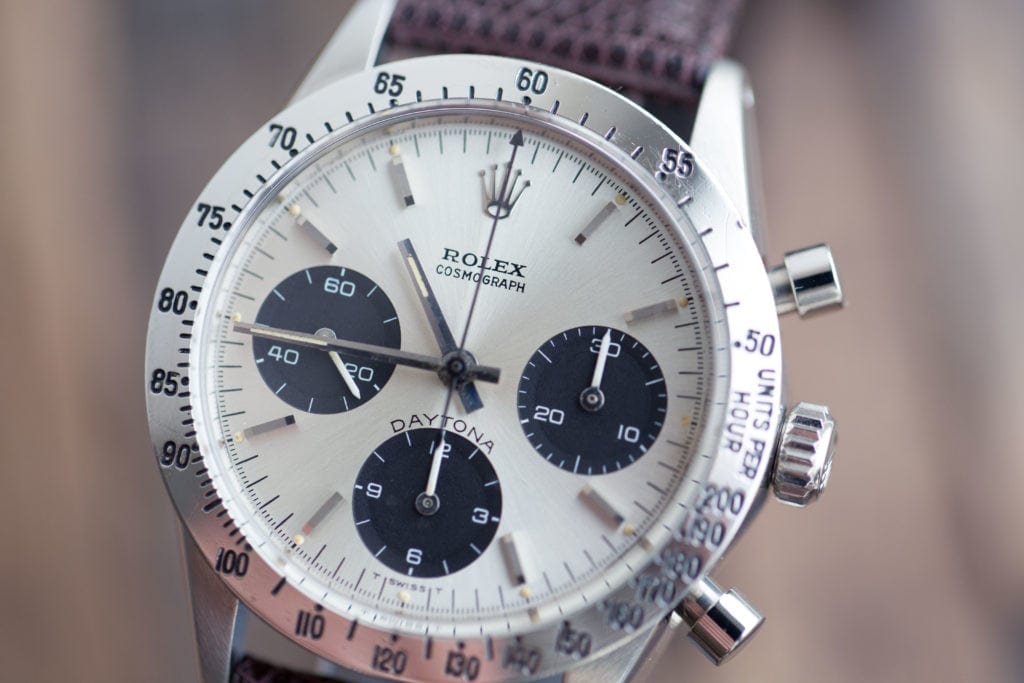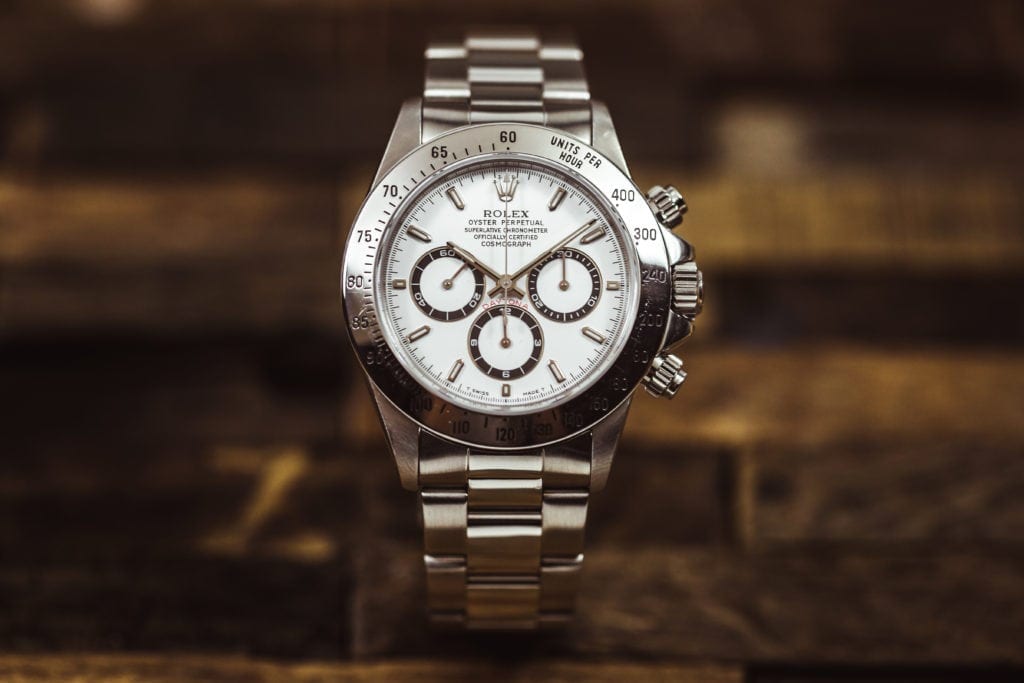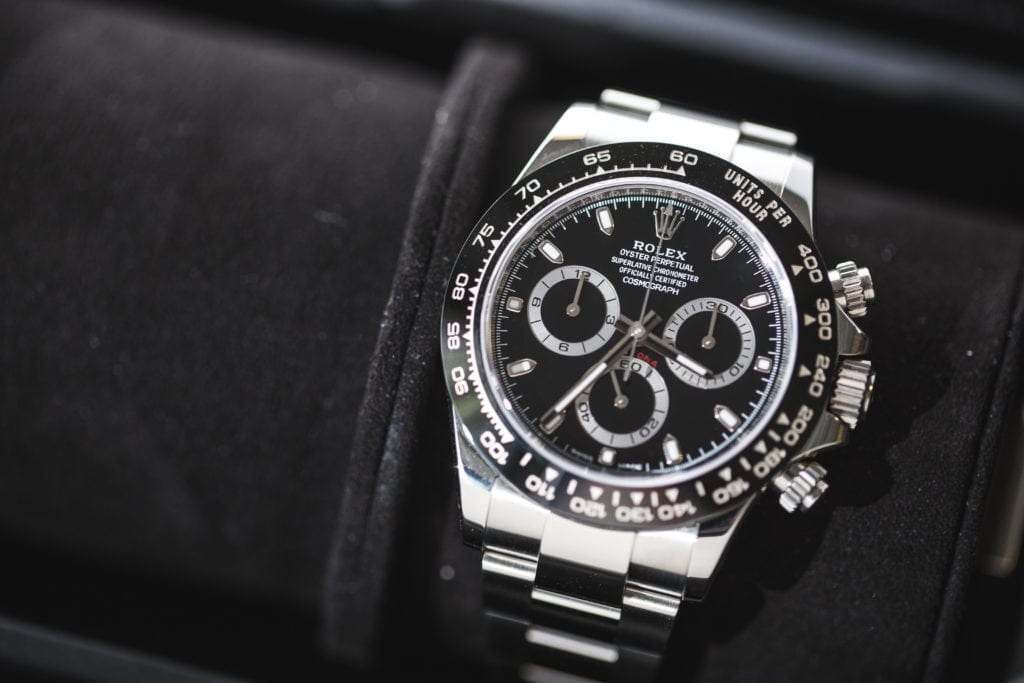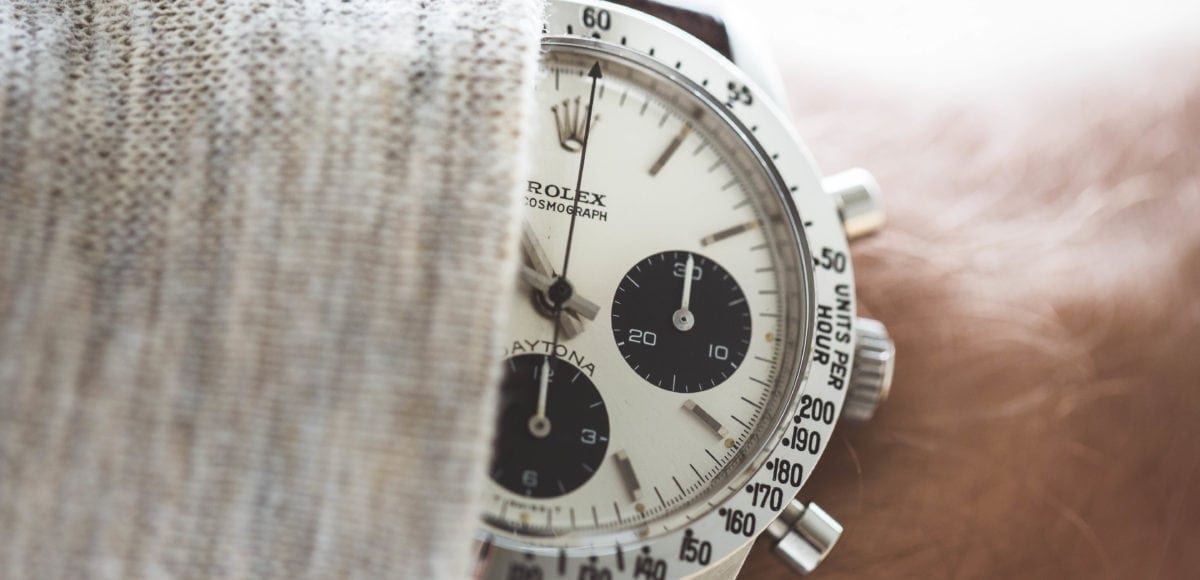Between 1904 and 1935, fourteen world land speed records were set in Daytona Beach, Florida. Avid Rolex wearer Sir Malcom Campbell set five of them. Over time, the area continued to build its reputation in the racing industry. Now, it’s a destination for prestigious sporting events, like the city’s namesake NASCAR races, and its responsible for the Rolex Daytona.
The Birth of the Rolex Daytona
The first 24 Hours of Daytona endurance race was in 1962. A year later, Rolex introduced the Daytona collection and started their sponsorship of the famous car race. It’s now called the Rolex 24 at Daytona. Over the years, the iconic model has evolved. It’s progressed from early Paul Newman Daytona’s of the 1960’s and 70’s to the latest stainless steel and ceramic version. Yet, with each iteration, the Daytona has continued to be one of the most beloved models in the Rolex catalog. Let’s take a deeper look at how the Rolex Daytona has changed through the years, all while maintaining its popular status.

Rolex Daytona 6262
Rolex first began working on a line of mechanical chronographs in the 1930’s. Still, the Daytona is oftentimes considered the brand’s first official collection of chronographs. The Daytona is actually a descendant of the Cosmograph. Many believe the Rolex Daytona launched in 1963, but it wasn’t until 1965 that the name Daytona appeared on the dial. For two years, the chronograph line has the moniker the Cosmograph. After Rolex established their partnership with the 24 Hours of Daytona, the collection officially became the Daytona. Today, the original Cosmograph name remains on the dial.
Reference 6239
The initial Cosmograph model, Reference 6239, marked a number of firsts for the brand. It was the first model to showcase what’s now considered a panda dial, featuring inverse colors for the chronograph registers. It was also the first model to feature a tachymeter scale engraved on the bezel as opposed to printed on the dial.![]()
When the first official Daytona debuted, it featured the Daytona signature under the twelve-o’clock position. However, this changed a few years later in 1967. It moved to appear above the chronograph register at the six-o’clock position. Another significant update from the Cosmograph to the official Daytona was the pushers. The Cosmograph models featured pump-style pushers. Then, the new Daytona Reference 6240 came equipped with all-new screw-down style pushers. This helped to increase the model’s water resistance.
The Zenith Movement

At first, the Daytona wasn’t the beloved watch we know today. It took about two decades for the model to take off. This was largely in part to the movement. Original Daytona’s featured a manual Valjoux-sourced chronograph caliber. But, in the 1980’s that all changed. Rolex knew they needed to upgrade the Daytona with an automatic chronograph movement. As soon as word got out, Zenith approached them. As the brands began negotiating, Rolex had a single bargaining chip. They wanted Zenith to revive the El Primero. Zenith Radio Corporation (ZRC) bought the brand in 1971 and retired the iconic movement. In 1986, Zenith presented the first variation of the El Primero, and Rolex countered with about 200 modification requests. Within two years, Zenith was able to meet Rolex’s rigorous production standards. The all-new automatic Daytona launched with the 16500 series in 1988.
In addition to the movement, the 16500 series included a number of other updates. The case size increased from the more modest, original 37mm to a more modern 40mm. There were also a few other notable changes, like the addition of a sapphire crystal. Additionally, it featured a lacquered and glossier dial as opposed to the original matte finish. Finally, it came equipped with applied metal hour markers treated with a luminous material.
The upgrade to the El Primero movement was an undeniable victory for the Daytona. However, for Rolex, the Daytona still wasn’t perfect enough. The brand ultimately wanted all their models to feature their own in-house movements. So, by the new millennium, they did just that. In 2000, Rolex retired the 16500 series and a new era of the Daytona immerged with the Reference 116520. It featured the newly designed caliber 4130 movement, manufactured entirely by Rolex.
The Stainless Steel and Ceramic

For the next decade, the Rolex Daytona continued to evolve with more minor updates. For example, in 2013, it became the first collection in Rolex’s Professional range offered in platinum. This was in celebration of the model’s 50th anniversary. Then, 2016 brought about the next major change for the Daytona. After a sixteen-year run, Rolex retired the Reference 116520 and released a brand new stainless steel and ceramic version. For many fans of the model and the brand, the addition of the Cerachrom bezel was long awaited. However, others still prefer the classic stainless steel bezel. This makes the Reference 116520 highly sought after even though it’s no longer in production.
Get More Articles Like This in Your Inbox
We're constantly creating great content like this. So, why not get it delivered directly to your inbox? By subscribing you agree to our Privacy Policy but you can unsubscribe at any time.






